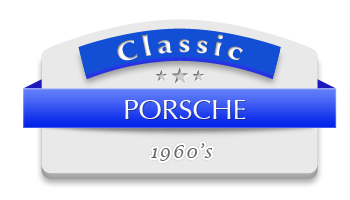Selling a Classic 1960’s Porsche
Still riding on the success of the illustrious Porsche 356, the Porsche Company would launch into the 1960’s with great anticipation for the release of their next icon, the Porsche 911. Having reached the important milestone of having 50,000 production cars in 1962, Porsche would set its sights on the launch of the 911. While the 1960’s Porsche 911 would continue the basic concept of the 1950’s Porsche 356, with its air-cooled rear-mounted engine, the 1960’s Porsche 911 was quite different. It offered a more streamlined exterior, a larger interior and more trunk space, a six-cylinder engine and torsion bar suspension. Of course, the Porsche 911 would live on as one of the greatest and longest-produced sports cars in history.
If you’re thinking about selling a 1960’s classic Porsche – whether it’s a 356 or 911 model – the Alex Manos team is happy to provide you with the following information on each of the models and the characteristics that buyers look for in each. Regardless of the variation you are selling, always be prepared to authenticate your particular model as original and have any and all documentation available to give potential buyers confidence in your 1960’s classic Porsche.
Classic Porsche 356:

The Porsche 356 was first introduced in 1950, after approximately 50 aluminum-bodied prototypes were developed in 1948 and 1949. The 356 would see more than a decade of production and several variations. Below is a list of the variations that were available during the 1960’s.
Classic Porsche 356B:
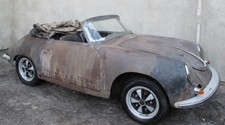
First introduced in 1959 for the 1960 model-year, the 356B would replace the 356A. Exterior changes include raised bumpers, vertical bumper guards, raised headlights, a horn grille above the bumper and a brake cooling grille below the bumper, and, for the first time, a Coupe example that would offer a front vent window that was previously only on the Cabriolet models. While the Coupes are a great find, buyers love the Cabriolet models for their open-air driving experience.
Classic Porsche 356C:

The 1960’s Porsche 356C would replace the 356B in 1964 and would mark the release of new disc brakes. With this release would come new hubcaps and wheels. Two 356C models would be available: the standard version and the 356SC. Because the 356C was considered the most fully developed of the 356 line, encompassing all of the improvements, it is a highly sought-after model. This is particularly true of buyers looking for a 356 they can drive on a regular basis.
Classic Porsche 356SC:
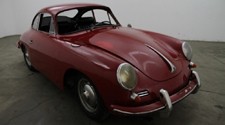
The Porsche 356SC would visually be the same as the standard version, yet would feature Solex 40PII carburetors and would boast 90 horsepower while the standard was only offering 75 horsepower with Zenith carburetors.
Classic Porsche 911:

The Porsche 911 was the successor to the Porsche 356 and was launched at the Frankfurt Motor Show in 1963. Offering an air-cooled, six-cylinder engine, it would boast 130hp and a top speed of 131mph. Buyers of the 1960’s, as well as those today, appreciate the 911 for its sleek curvature, powerful performance and technological advancement. Several variations would be available during the 1960’s, which can be found below.
Classic Porsche 911S:

In 1966 Porsche would introduce the 160hp Porsche 911S, which was the first to offer forged alloy wheels from Fuchs. Known as the sport or “Super” version, the 911S offered a slightly higher compression ratio, a reshaped inlet passages, plus an extra oil cooler for greater reliability at higher power. Buyers particularly like this model for introducing the five-speed transmission.
Classic Porsche 911T:
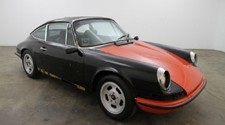
The 1960’s classic Porsche 911T would come about in 1963. With the 911T, Porsche would become the first to meet strict guidelines and changes brought about by the United States for safety and emissions. Considered the base model at the time, the 911T was popular with buyers who didn’t need the performance or luxury that the other models boasted.
Classic Porsche 911L:
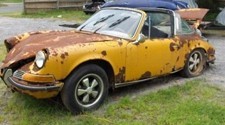
In 1967, the 911 would receive it’s first, although minor, update. At the same time, the standard 911 would be renamed the 911L for “Luxury” and would run alongside the 911S and 911T. This was an up-market move for Porsche, selling the 911L for $600 more than the previous year’s 911. Modifications to meet new U.S. regulations would include add-on side marker lights, which help distinguish this particular model.
Classic Porsche 911E:
Debuting in 1969, the 911E would replace the 911L. Although it was very similar to the 911L, thanks to the new fuel injection, it would produce 140hp. This particular model would find its place between the tamer 911T and the high-performance 911S.
Classic Porsche 912:
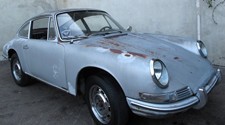
Starting in 1965, buyers who felt they did not need quite the performance that the standard 911 offered could opt for the 912, which featured a four-cylinder engine. Similar in design to the 911, the Porsche 912 eased the transition from the 356 to the 911. Fewer amenities, less power and weighing approximately 250lbs less, the 912 actually outsold the 911’s during the first few years of production.
If you have a 1960’s classic Porsche that you’re thinking about selling, the Alex Manos team would love to hear from you. Always in the market to buy classics of all makes, models, and conditions, they are known for offering top dollar in cash. They encourage you to browse their website to learn model-specific Seller’s Tips and welcome you to contact them with any questions you may have. Connect today to get started!
[sociable/]

